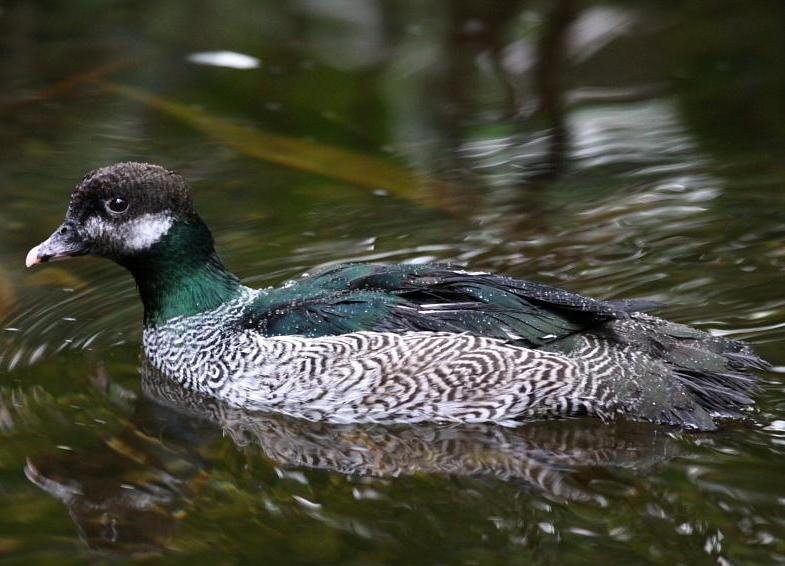
Green pygmy goose(Nettapus pulchellus)
Phylum —chordata
Class — aves
Order — anseriformes
Family — anatidae
Genus –nettapus
Appearance
Ranging from 30 to 36 cm (12 to 14 in) in length, it is one of the smallest species of duck. It has a 48 to 60 cm (19 to 23.5 in) wingspan.
It has a small bill and compact form. The breeding male has a predominantly dark green back, neck and crown, white cheeks and dark green, pale grey and white scalloped underparts. The tail and primary flight feathers and primary coverts are black, while the secondary flight feathers are white. The secondary coverts are a dark iridescent green. This iridescence is lost outside of the breeding season and the plumage is duller. It exhibits sexual dimorphism, the female has a barred rather than green neck and otherwise resembles the non-breeding male. Immature birds are duller, and have mottled dark brown heads.
Habitat
The green pygmy goose is found in southern New Guinea and across northern Australia. It is largely resident, apart from dispersion in the wet season.
Behavior
These birds almost never come ashore. When they do, they often walk very clumsily and they are also reluctant to fly.
Diet
The green pygmy goose is an herbivore and eats aquatic plants, seeds, fruit and leaves.
Reproduction
Green pygmy geese mate for life. Males will find potential nesting sites but the female will make the final decision. When the female is nesting, the male will defend the site very aggressively. When the eggs hatch, he helps to rear the young.
The green pygmy goose nests in tree hollows. Eight to twelve eggs are laid and the incubation period is 26 days.
In captivity
Green pygmy geese live about 10 years.
To make the green pygmy goose feel comfortable in captivity, a pond is equipped for it. Birds are kept in small groups.
The green pygmy goose is fed a variety of seed mixtures for wild ducks. Also, birds are offered granulated food, mealworms and greens (for example, spinach or cabbage leaves).
 Russian
Russian
 English
English
























